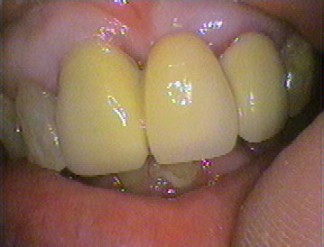Services — Crowns and bridges
Redesign and rehabilitate your teeth
Crowns are an important way of protecting teeth especially after root canal treatment. While weakened teeth are at a high risk of splitting and becoming unsavable, worn teeth can also be protected, and as crowns do not wear, the bite can be stabilised.
When teeth are lost, the bite can collapse into the resulting space, which can cause chewing issues and an increase in jaw joint problems and decay. Bridges help to prevent and correct this.
How crowns and bridges work
To attach a crown or bridge, first the teeth are carefully prepared to allow a thimble like shape to be cemented over the entire tooth. This protects the tooth by encasing it from the gum line. Bridges and crowns can also be joined with a false tooth to close up spaces and improve the function and appearance of the smile, as well as stabilising the bite.
Choosing the right crown for you
Crowns now come in a variety of materials. Conventional crowns are made of porcelain fused to metal, with the metal providing a strong foundation for the ceramic porcelain. However, with the advent of strong ceramic such as Zirconia, non-metal foundations are now possible, and this can lead to a better aesthetic result especially for front teeth.
 479 Marrickville Road
479 Marrickville RoadDULWICH HILL NSW 2203
Tel (02) 9564 2397
info@seymourdental.com.au
seymourdental.com.au
 Upper front bridge – two crowns holding a false tooth (pontic) replacing the lost upper left front tooth
Upper front bridge – two crowns holding a false tooth (pontic) replacing the lost upper left front tooth
 Lower left first premolar space and it's bite
Lower left first premolar space and it's bite  Lower left bridge replacing lost first premolar and it's bite
Lower left bridge replacing lost first premolar and it's bite